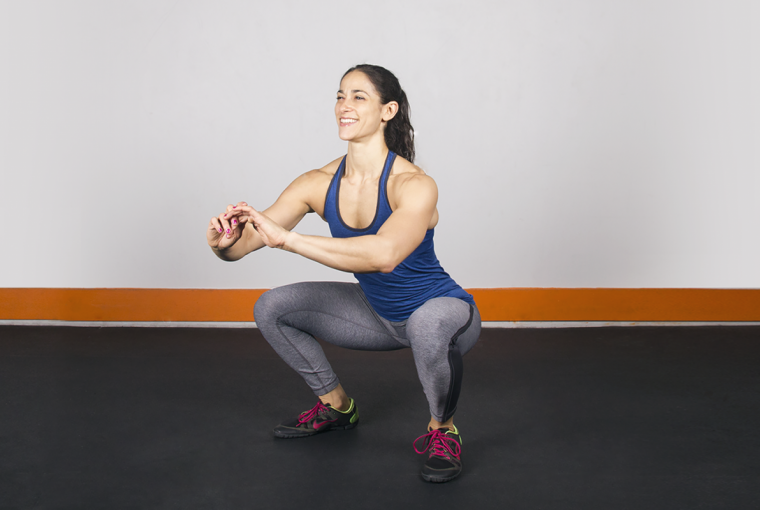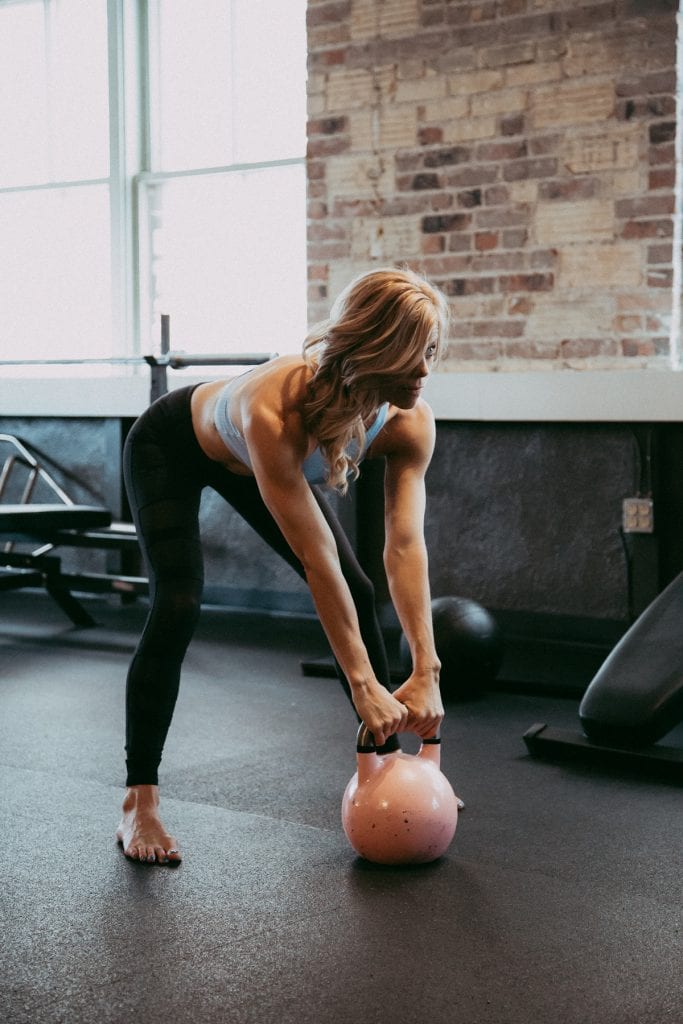Too many people in society today have difficulty hinging. We often are on our computers or phones and we are not as active as we were 15-20 years ago. This is why people suffer back pain, knee pain, and weakness—all caused by sitting. Not being able to hinge means not being able to properly engage the posterior chain of the body(muscles on the back side of your body), particularly the glutes (your butt muscles). These are the same muscles that help you run and protect you from back weakness during many activities. Instead, modern people—and even some athletes—are unintentionally using their knees and lower backs to do all of the work their butt muscles are supposed to do. In sports science we call using a muscle “firing a muscle.” Muscle imbalances and inactive, or weak, muscles come from not being able to fire that muscle during a motion where it’s required. If you’re using your back and knees instead of your glutes, it can lead to knee pain and can eventually cause an injury, as well as back pain, which can then lead to shoulder and neck injury. As a society it is important to think of being proactive with our bodies instead of reactive, meaning train to prevent injury and increase performance – definition of Exercise!
Introducing the Kettlebell Swing into your training program is necessary to work on hinging and engaging the posterior chain. There are two parts to a kettlebell swing. The bottom which is the hip hinge and the top which is the glute engagement. Follow the steps below to get yourself started off to a Successful Swing!!
TRADITIONAL KETTLEBELL SWING (STEP-BY-STEP)
- Pick up a kettlebell by the handle.
- Hinge by sitting back and bending at the hips, then the knees.
- Swing the kettlebell back and behind your knees.
- Thrust your hips forward, squeeze your glutes, and stand up straight. Do not backward bend at the top of the motion! Be sure to create a non-stop fluid motion as you swing: with the kettlebell going behind the knees then up to shoulder level.
- At the top of the swing, the kettlebell should go no higher than chest level. Do not raise the kettlebell with your arms. Your arms— as well as the kettlebell—should remain weightless through the entire motion. * Notice how everyone’s swing is slightly different, but the hinge remains a constant!
Incorporate this into your training program by doing 30 seconds of swings with good form with a goal of 60 seconds with good form then increase your weight and start back at 30 seconds again! Be mindful Form Over Time Always!
AUTHOR BIO
Jodi Barrett





